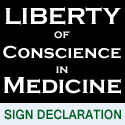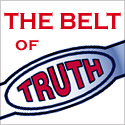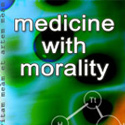Prohibition of Human Cloning Act 2002 CDP Submission
Legislation Review Committee
Secretariat
PO Box 4226
Manuka, ACT 2603
Legislation Review of Australia’s
Prohibition of Human Cloning Act 2002
and
Research Involving Human Embryos Act 2002.
Submission on behalf of
Christian Democratic Party (WA Branch)
GPO Box Z5041
Perth WA 6831
cdpwa@iinet.net.au
Dr Lachlan Dunjey
MBBS FRACGP DObstRCOG
0407 937 513
lachlan@dunjey.name
General Comments:
We emphasise that a human embryo is a living human organism with unique adult characteristics already determined. Though not yet expressed, individuality is inherent and real in the genetic programming from the time of fertilisation.
We are thankful that the Australian Government has supported the United Nations Declaration on Human Cloning.
We oppose the creation of cloned human embryos for any purpose whatever.
We oppose the use of ‘excess’ embryos for any purpose other than implantation into the uterus of a prospective mother or a prospective adoptive mother.
We consider that the evidence for successful use and potential successful use of stem cells derived from non-embryonic sources far outstrips the possible potential use of stem cells derived from embryos and that the push to use more embryos for this purpose is not warranted.
Re 3.
Issues – definitions and terminology
· Are the definitions of ‘human embryo’ and ‘human embryo clone’ clear and unambiguous? Do they appropriately reflect community standards? Do they cover all of the activities that should be regulated under the legislation?
The definitions are sound. We compliment the committee for highlighting the need for a ‘common language’. Contributions have sometimes been confused by using terms such as Somatic Cell Nuclear Transfer (SCNT) instead of using ‘clone’.
We appreciate that you have specifically highlighted that a cloned human embryo is in fact a human embryo whether it has been created for reproductive purposes or so-called ‘therapeutic’ purposes.
· Are other definitions and terminology used in the Acts helpful for understanding and interpreting the legislation? Do they appropriately reflect community standards?
We consider that they are clear and helpful.
· Does the legislation need to define stem cells?
No. We agree that the focus of the legislation is on the creation and use of
human embryos rather than on embryonic stem cells. For purposes of discussion the definitions given in the Issues Paper are clear and helpful
· Is the focus on the use of excess ART embryos sufficient?
The definition is adequate. Further comments are made in the appropriate section under 5.
Re 4.
Issues – prohibited embryos and practices
· How has the ban on all human cloning affected research in Australia?
It has obviously limited the ability of researchers in fields of both reproductive cloning and cloning for ‘therapeutic’ purposes. While some would lament the lack of research in the latter field we are pleased with the continued emphasis of research in stem cells from non-embryonic sources.
· How have the other prohibitions affected research in Australia?
Likewise we are pleased that there is no legislative support for what we consider to be abhorrent research involving chimeric and hybrid embryos.
· Are the prohibited embryos and practices described in the Act still relevant in light of advances in biotechnology since 2002?
We consider that they are even more relevant in light of the advances made in research in stem cells from non-embryonic sources. The legislation is also in keeping with the United Nations Declaration on Human Cloning which Australia supported and is in line with many other countries, including Canada, Germany, Italy, Norway, Ireland, Austria, Poland, Argentina and France.
· Do they appropriately reflect community standards?
In our view they do now that some of the hype has gone out of the push for therapeutic cloning and the community is better informed about the real lack of ‘promise’ of embryonic stem cells.
· Has the prohibition of payment beyond reasonable expenses (valuable consideration) for gametes and embryos affected access to these items?
We believe it has and we applaud the prohibition. To allow such payment would be to facilitate the exploitation of women to provide eggs and to commercialise and therefore trivialise human life.
Re 5.
Issues – use of excess ART embryos
· Are the provisions of the legislation with respect to the use of excess ART embryos clear and unambiguous?
We consider the Issues Paper to be very clear in its discussion of their use but we have serious concerns regarding their application and licensing by the NHMRC Embryo Research Licensing Committee. Included in the 9 licenses granted is one for the development of methods for
Preimplantation Genetic and Metabolic Evaluation of Human
Embryos with the obvious sequel of discarding embryos with defects regarded as being significant by prospective parents. This raises the spectre of where the line is to be drawn and what is to be regarded as a disability and whether a life is ‘worthy to be lived’.
In light of the consideration ‘the likelihood of the proposed project achieving a
significant advance in knowledge or improvement in technologies for treatment,
which could not reasonably be achieved by other means‘, we also question the granting of a licence for ES cells when the use of non-ES cells has been shown to be so effective (see www.stemcellresearch.org/facts/asc-refs.pdf ).
· Do they appropriately reflect community standards?
We consider the community to becoming more aware of the intrinsic value of human life and that concerns are being raised regarding its trivialization.
· Have any issues arisen with respect to the operation of the legislation (such as with giving and obtaining consent for an embryo to be an excess ART embryo; or giving and obtaining consent from responsible persons for the use of excess ART embryos in research)?
· Are the arrangements for accreditation and ethical oversight of ART centres appropriate?
We have no specific knowledge of issues regarding these matters.
Re 6.
Issues – national stem cell bank
· Who would use a national stem cell bank in Australia?
· What would be the advantages of an Australian stem cell bank?
· How should an Australian stem cell bank be administered?
· How should the community be involved in such as stem cell bank?
· Do Australian researchers have appropriate access to stem cell banks in other countries (such as the UK Stem Cell Bank)?
We would be totally opposed to a bank with ES cells but a national non-ES cell bank e.g. using cord blood stem cells, would be ethical and in line with similar banks for blood and marrow products. As well as being a therapeutic resource it would facilitate research in different institutions that otherwise might have difficulty in accessing stem cells.
Re 7.
Issues – research developments
· Has the access to excess ART embryos for research allowed a significant advance in knowledge and technology in ART?
It will be argued that this is so but hard evidence should be given to support any such claim.
· What are the next steps in the research? What are the potential benefits of the research? What are the potential risks?
The inevitable result (‘risk’) is the death of the embryo. We submit that there are better uses for ‘excess’ ART embryos e.g. adoption, and that death of the embryo by natural attrition is significantly different to death by deliberate interference. Our society cannot afford to degrade humanity by deliberately causing death ‘in the name of science’ at any stage of human development or life.
· Have the advances in stem cell research been greater or less than expectations in 2002?
Significantly greater in the field of non-ES cells! And overwhelmingly less with respect to ES cells than the 2002 promises would have led us to believe.
· Has the access to excess ART embryos for research allowed a significant advance in knowledge in this area?
The evidence is lacking to our knowledge.
· What are the next steps in the research? What are the potential benefits of the research and when might these occur? What are the potential risks?
We are opposed to such research resulting in embryo death. With respect to ES cells the risks in terms of ‘unrestrained’ pluripotentiality with the formation of tumours and unwanted tissues make any so-called ‘promise’ of human use probably many decades away.
Concluding Recommendations
Prohibition of Human Cloning Act 2002:
We recommend that this and the complementary State and Territory legislations be maintained without amendment.
Research Involving Human Embryos Act 2002:
We recommend that all research causing harm or destruction to human embryos be prohibited and appropriate legislation repealed.
Until 5.4.2005 research on ART embryos was restricted to those created before 5.4.2002 but this restriction has lapsed. This makes it even more imperative that there be a complete prohibition on harmful and destructive research involving human embryos. All embryos should be protected in line with our international obligations under the United Nations Declaration on Human Cloning which calls on Member States to enact laws “necessary to protect adequately human life in the application of life sciences”.






